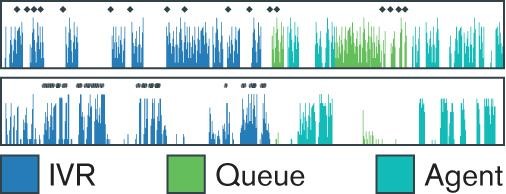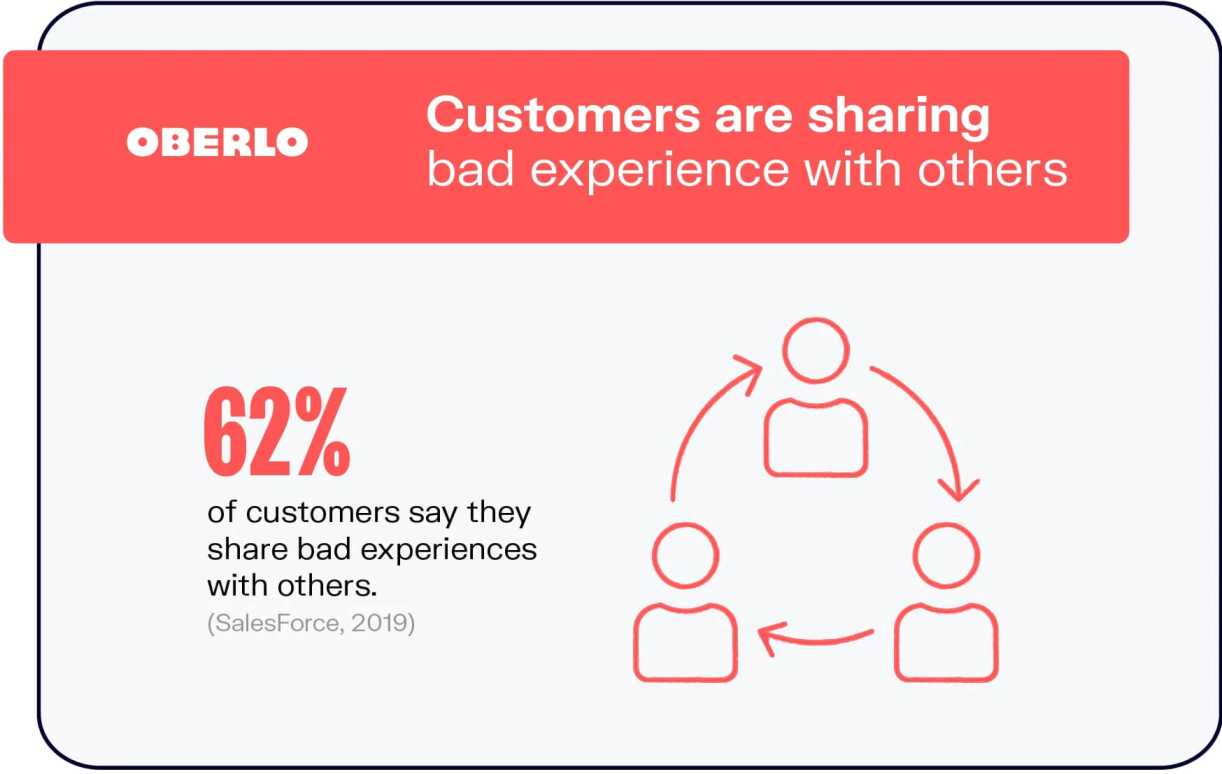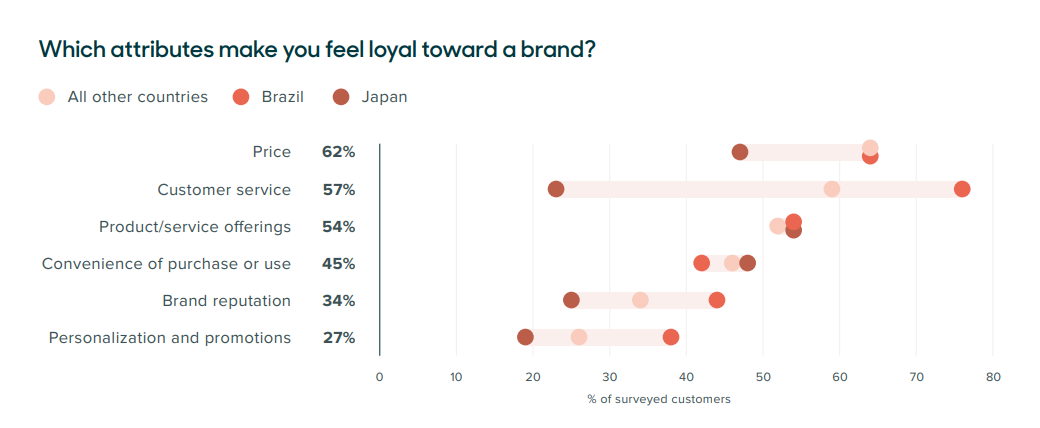Whether you are a small company or a massive enterprise, your business needs VoIP systems to connect with your customers. In our data-driven era, you can gather, track, and analyze insights from VoIP calls to spot problem areas and improve the customer experience. How?
This article will explain this. We’ll show you essential metrics and VoIP analytics to track. Read on to find out the importance of VoIP analytics to your business.
This sounds like a herculean task, but you can use tools like the Google-powered BigQuery integration to automate your company’s data collection and processing for VoIP calls.
What you need to know about VoIP Analytics
In the past, most VoIP phone system came as standalone applications that only made, received, and cued calls. But recently, VoIP phone systems have built-in data analytics programs that gather insights from the system.

( source: Intrado )
VoIP analytics also provide actionable insights on a central dashboard integrated into the interface. Sometimes, the main dashboard exists on a third-party software program embedded into the VoIP phone system.
Essentially, VoIP analytics covers every aspect of customer behavior with the service representative and the system itself.
Who can use VoIP analytics?
As mentioned earlier, SMEs and large enterprises rely on VoIP analytics to improve customer service. Generally, any business that provides customer support via phone calls needs to gather VoIP analytics to improve its services.
Restaurants, software product companies, and online retailers all need to collect and analyze data from VoIP calls. Besides, medical facilities, government agencies, and academic establishments also rely on phone call data.
Most importantly, VoIP call data is the lifeblood of call centers and support agencies because they need to track as many essential analytical insights as possible.
What metrics and data your VoIP system should track
Many VoIP systems provide advanced data collection solutions as part of their phone call package. But you still need guidance to understand the essential metrics and data to track.
With modern VoIP solutions, you can customize your dashboard to gather as many metrics as possible. Since we can’t mention every single dataset here, let’s highlight and describe the essential metrics:
- Inbound calls — the number of calls you receive with the system
- All calls — the total number of calls (both inbound and outbound)
- Answered calls — the number of first calls answered
- Missed calls — the number of calls forwarded to voicemail or abandoned completely
- Toll-free calls — calls from toll-free phones
- Internal/external calls — the calls from within or outside the organization
- Talk time — time spent on calls by all agents
- Local/International calls — the number of domestic calls or those coming abroad
- Voicemail calls — the number of calls forwarded to voicemail
- Calls in the queue — the number of pending calls in the IVR
- Call logs — the client’s entire call history
- Call tracking — metadata from the user’s device
- Call recordings — detailed recordings of calls for future references
- Lead scoring — a point-scoring system of evaluating leads based on their potential value
- Real-time intelligence — real-time call data (like bandwidth strength, etc.)
- Virtual receptionist data — information about the virtual receptionist
Keep in mind that metrics tracking is part of the process. Other critical actions are to gather data and analyze it eventually to gain insights. To proceed with that, there are dozens of data analytics, visualization, and reporting tools that can help you. For example, you can automate data importing with BigQuery integrations to collect data from your VoIP system and use it with other tools.
How VoIP can help your business
We have identified that VoIP analytics can improve your business regardless of size. But that doesn’t cover the core benefits of integrating a VoIP system into your business. Let’s discuss the three primary advantages of using VoIP.
(source: Zendesk )
The ultimate benefit of the VoIP phone systems relates to the eCommerce field.
As described in the statistics below, 57% of customers base their loyalty to a brand on the quality of the customer service. If the customers are unhappy with the quality of support they receive from your agents, they will become disgruntled with your company.
By gathering customer analytics, you also make your business more customer-oriented. Brands that prioritize their customers’ needs and interests have a higher chance of becoming household names. For example, companies like Buffer and Studiopress are famous for their fast-paced and constructive replies to their customers. The success of these companies can be credited to their “customer first” ethos, accompanied by great products.
Most importantly, customers are always willing to share their negative experiences to dissuade others from patronizing your brand.

( source: Oberlo )
They will go as far as creating Twitter threads or multiple Instagram stories to complain about your poor customer service. And once this reputation starts to take root, your brand’s reputation will suffer, leading to low conversion.
Improve customer experience
Diving into VoIP analytics is the way to improve the experience of your customers with your business.
Gathering data on VoIP calls gives you insights into consumer behavior. By aggregating the data from multiple international and local calls, you can easily spot your clients’ critical pain points.
When strategizing on ways to improve the customer experience, ask the following questions:
- Is the queue constantly clogged?
- Is the waiting time too long?
- Does the call get forwarded to voicemail often?
- Is the VoIP system’s interface safe to use?
- Do the support agents provide adequate assistance and solutions to problems?
Answering these questions will help you create a better customer persona. You can also identify the main problems and use the data to generate detailed customer care scripts. These scripts will help your agents spot potential issues and suggest solutions faster without clogging up the phone lines. Besides, customer-based data can pinpoint common issues that individuals or groups within that specific demographic encounter.
For example, people within a certain age bracket might struggle to use the VoIP call system’s interface when they have issues. By reviewing the call scripts, you can quickly identify this pattern and fix the problem.
Also, consumers want to feel a personal connection with a support agent. The part of consumers will always dislike automated telephone systems. Using VoIP analytics, you can identify this segment and consider reducing the use of IVR systems and voicemail redirects when using VoIP calls.
Ultimately, every company should use advanced VoIP analytics to improve customer satisfaction. Your data analysts should also interpret the data from the phone systems and translate their findings into the company’s interactions with consumers across the board.
Give insights into customer behavior
Top companies in every industry have a bead on customer behavior and market trends because these two datasets determine the best strategy to adopt. As we all know, Tesla rode the Bitcoin wave by becoming the first auto-company to accept crypto payments.
Although most of marketing and customer behavior data comes from surveys and in-depth market research, the rest comes from recordings of customer support calls. This valuable information helps companies understand customer preferences, anticipate their needs, and make informed business decisions.
Additionally, with the growing popularity of cryptocurrencies like Dash, businesses are also exploring customer behavior related to digital currencies, including insights on where to buy Dash crypto and how it influences purchasing patterns.
After all, what better way to understand your consumers than listening to them directly?
Analyzing call recordings gives you a better grasp of ongoing and upcoming trends on which your business could capitalize. Besides, only dedicated customers would spend the time to contact your customer service. Businesses can also analyze purchasing patterns by analyzing VoIP call data. For instance, if the complaints about credit card payments are on the rise, then this could mean the following:
- More users are using credit card payments to buy your services.
- More customers are buying goods online.
- The payment or checkout portal is broken.
- The local government in that location is regulating payments.
Essentially, you should use VoIP analytics to gather consumer behavior data and boost your customer satisfaction score (CSAT).
VoIP analytics and other customer-centric data are essential to the growth of any business today. These insights improve the overall customer experience and foster innovation within the company. Besides, VoIP call analytics provides valuable and actionable intel on customer behavior and market trends. So, your company should invest in data analysis initiatives to get the best out of your VoIP phone system.
FAQs:
1. Which industries can benefit the most from VoIP Analytics?
Industries spanning finance, healthcare, and customer service stand to gain significant advantages through the strategic implementation of VoIP analytics. By leveraging sophisticated VoIP metrics and analysis tools, these sectors can optimize communication processes, enhance call quality, and achieve cost efficiencies.
2. Why everyone is switching to VoIP?
The widespread adoption of VoIP is driven by its numerous advantages and VoIP metrics, revealing enhanced cost savings, flexibility, and feature-rich communication. The transition to VoIP is propelled by businesses seeking efficient and scalable communication solutions, underlining the appeal of this technology for organizations of all sizes.
3. Will VoIP replace cell phones?
While VoIP has gained prominence, it’s unlikely to entirely replace cell phones. VoIP operates over the internet, requiring a stable connection, whereas cell phones offer mobility regardless of Wi-Fi availability. However, VoIP complements cell phones, providing cost-effective alternatives for international calls and business communications. Besides, VoIP analysis tools help businesses better understand their customers.
4. What are the statistics of VoIP?
The statistics of VoIP showcase its growing influence. According to recent data, the global VoIP market is expanding rapidly, with millions of users worldwide. Businesses embracing VoIP witness substantial cost savings, often up to 50%. Additionally, advancements in VoIP analytics tools contribute to improved call quality and overall communication efficiency.

Subscribe to our newsletter & never miss our latest news and promotions.










